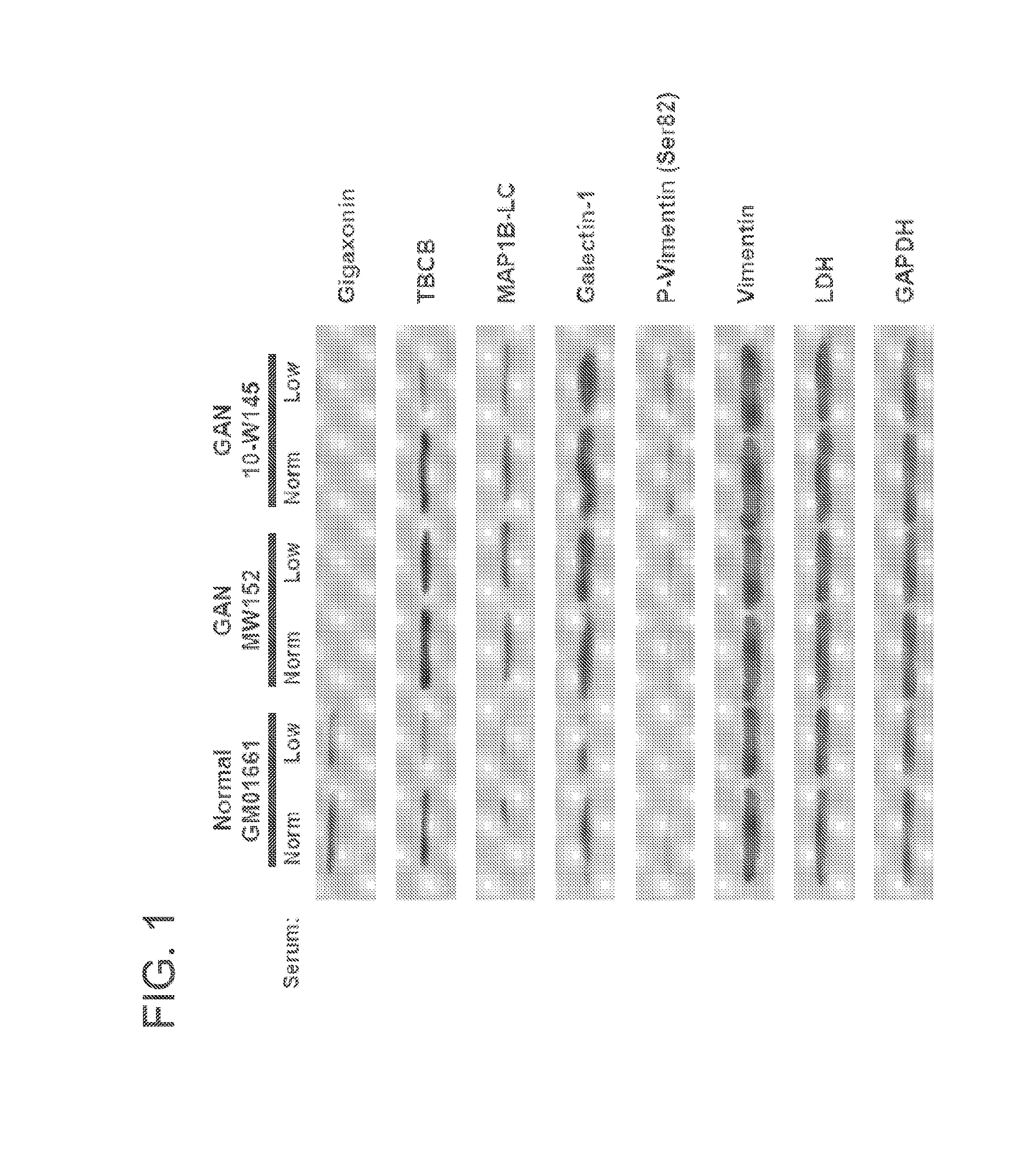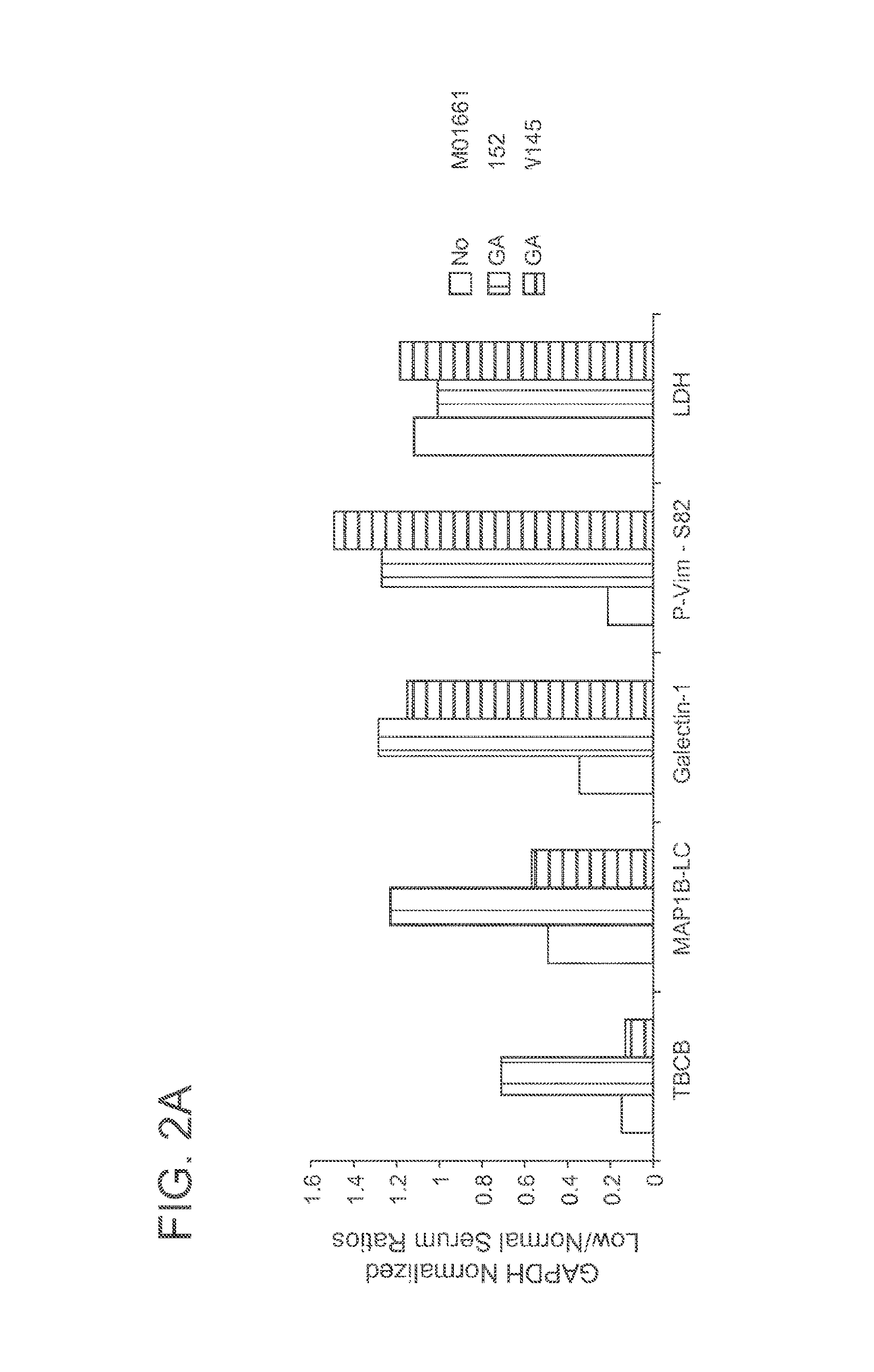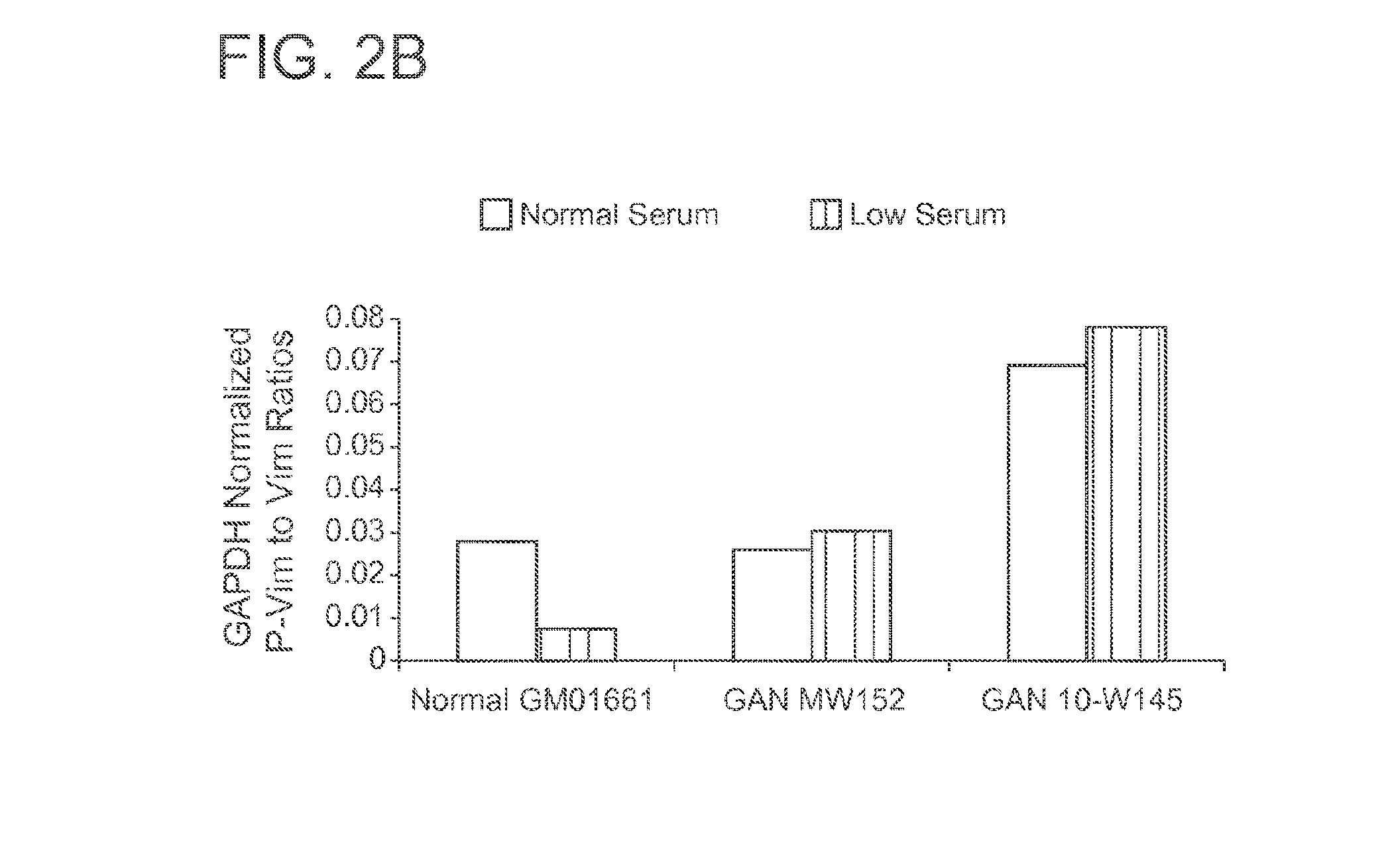Gigaxonin fusion protein and methods for treating giant axonal neuropathy
a giant axon and fusion protein technology, applied in the direction of peptide/protein ingredients, drug compositions, peptide sources, etc., can solve the problems of neuronal axons, dysregulated axons, etc., and achieve the effect of reducing vimentin aggregation
- Summary
- Abstract
- Description
- Claims
- Application Information
AI Technical Summary
Benefits of technology
Problems solved by technology
Method used
Image
Examples
example 1
[0060]In this Example, fibroblasts obtained from a patient afflicted with Giant Axonal Neuropathy (GAN) were analyzed for purported gigaxonin targets.
[0061]Specifically, GAN fibroblasts (GAN MW152 and GAN 10-W145) and normal fibroblasts (GM01661) were seeded in normal serum (10%) media for 24 hours. Cells were then changed to normal (10%) and low serum (0.1%) media and cultured for an additional 72 hours. Cells were then processed for Western blot analysis.
[0062]As shown in FIG. 1, gigaxonin was undetectable in GAN fibroblasts. Additionally, low serum conditions appeared to decrease the level of gigaxonin in normal fibroblasts. The effect of low serum media on other purported target proteins of gigaxonin varied (see, FIG. 1). Target protein levels were also normalized to GAPDH and graphed according to their low serum / normal serum ratios (FIG. 2A). Additionally, the ratio of phosphorylated vimentin (P-Vim) to unphosphorylated vimentin (Vim) in low and normal serum media of each cell ...
example 2
[0065]In this Example, the replacement of gigaxonin was used to determine the effect on the GAN phenotype in patient fibroblasts carrying the GAN mutation.
[0066]Specifically, the cell penetrant peptide, transactivator of transcription (TAT) was used to deliver human gigaxonin into diseased cells. A TAT-gigaxonin (TAT-Giga) fusion protein (SEQ ID NO: 10) was expressed and then purified from E. coli. The GAN phenotype was induced in fibroblasts from affected patients using low serum culture media. Cells were then treated with purified TAT-Giga fusion proteins. Cells were then assayed for the aggregate phenotype via immunofluorescence against vimentin and α-tubulin. Cells were imaged using confocal microscopy.
[0067]As shown in FIG. 4, normal fibroblasts stained for vimentin (FIG. 4B) and tubulin (FIG. 4C) exhibited a normal intermediate filament cytoskeleton and a normal microtubule cytoskeleton. An overlay image shows the co-localization of vimentin and tubulin staining (FIG. 4A). As ...
example 3
[0068]In this Example, the effect of administering TAT-Giga fusion protein on the formation of vimentin-free zones in GAN fibroblasts was determined.
[0069]GAN fibroblasts were cultured as described above. Cell were administered a low dose (0.3 μg) or high dose (1.5 μg) of TAT-Giga fusion protein. Both treated and untreated (control) fibroblasts were stained for vimentin and tubulin and assayed for number of vimentin aggregates.
[0070]As shown in FIGS. 7A-C, staining of vimentin for intermediate filaments demonstrated the presence of peripheral vimentin-free zones in GAN fibroblasts (FIG. 7B), whereas microtubule staining (as revealed by tubulin staining; FIG. 7C) was normal. As shown in FIGS. 8A-C, staining of vimentin for intermediate filaments demonstrated that the administration of TAT-Giga fusion protein blocked the development of peripheral vimentin-free zones in GAN fibroblasts (FIG. 7B), whereas microtubule staining (as revealed by tubulin staining; FIG. 7C) was normal.
[0071]A...
PUM
| Property | Measurement | Unit |
|---|---|---|
| size | aaaaa | aaaaa |
| disorder | aaaaa | aaaaa |
| specific length | aaaaa | aaaaa |
Abstract
Description
Claims
Application Information
 Login to View More
Login to View More - R&D
- Intellectual Property
- Life Sciences
- Materials
- Tech Scout
- Unparalleled Data Quality
- Higher Quality Content
- 60% Fewer Hallucinations
Browse by: Latest US Patents, China's latest patents, Technical Efficacy Thesaurus, Application Domain, Technology Topic, Popular Technical Reports.
© 2025 PatSnap. All rights reserved.Legal|Privacy policy|Modern Slavery Act Transparency Statement|Sitemap|About US| Contact US: help@patsnap.com



